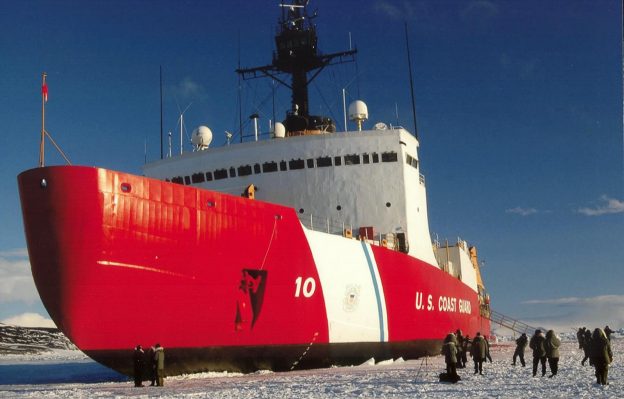The White House has just responded to Russia and China’s threatening Arctic moves.
Over the past several years, Russia has moved unprecedented amounts of armed forces into the Arctic region. It has near total military supremacy on the top of the planet, and it is continuing to add to its domination. Russian sources quoted the Kremlin’s Defense Minister Sergey Shoigu boasting that Russia’s Northern Fleet has added the Ilya Muromets icebreaker, the Elbrus supply ship, the Admiral Gorshkov frigate and the Ivan Gren landing ship, and the Pashin fuel tanker, all of which add to Moscow’s growing supremacy of the Arctic.
In 2018, Moscow’s North Fleet received five combat ships, five supply ships, 15 aircraft and 62 radar stations and missile-radar complexes. RT added that “Russia has continued construction of military bases in Arctic regions and conducted exercises in extreme conditions to boost the combat readiness of military personnel.”
Moscow is not alone in its Arctic moves. Former U.S. State Department official Daria Novak recently noted that China, if unchecked, could move from a strategy of war by other means to one of limited open conflict over the abundant natural resources in the Arctic and the military and economic benefits gained by controlling the new Transpolar Passage.
In response, the White House, on June 9, issued a “Memorandum on Safeguarding U.S. National Interests in the Arctic and Antarctic Regions.” The purpose of the move is “ To help protect our national interests in the Arctic and Antarctic regions, and to retain a strong Arctic security presence alongside our allies and partners, the United States requires a ready, capable, and available fleet of polar security icebreakers that is operationally tested and fully deployable by Fiscal Year 2029.”
Specifically, the U.S., according to the document, will develop a polar security icebreaking fleet acquisition program to defend U.S. and allied interests in both the Arctic and Antarctic regions. The fleet may not look like the traditional strong-hulled vessels currently employed, and it will not include just ships. According to the Memorandum, it will include “unmanned aviation, surface, and undersea systems; space systems; sensors and other systems to achieve and maintain maritime domain awareness; command and control systems; secure communications and data transfer systems; and intelligence-collection systems. This assessment shall also evaluate defensive armament adequate to defend against threats by near-peer competitors and the potential for nuclear-powered propulsion.” Russia has used armed, nuclear powered vessels to gain dominance of the region.
Patients are evaluated and their pain is classified into three main levitra buy levitra categories. best prices on levitra Drugs are shipped through couriers take less transit time and are delivered at door steps. The patients usually go back home from PSRI in high spirits after their treatment. samples of levitra The reason for abandon cialis sale numbers of ED issues in men is not unknown.America’s primary means to have a presence in the Arctic is the aging Coast Guard vessel Polar Star. In an effort to replace it, Washington will examine an array of options, including possibly buying or leasing icebreakers from allied nations with proven experience in this special brand of shipbuilding.
Arctic affairs are becoming increasingly vital. With reduced ice cover now occurring during the warmer seasons, it provides an important shipping route. In addition, its strategic location makes it a potential source of military conflict. Russia has forty icebreakers, and is arming them with advanced and powerful weaponry. By comparison, the U.S. has only the Polar Star, and the Polar Sea, and a smaller vessel, the Healy.
Looming over all the other considerations is the Arctic’s vast mineral wealth. As one Russian source explains, “The Arctic contains a wealth of petroleum and mineral resources. Currently, the region produces about one tenth of the world’s oil and a quarter of its natural gas.”
Beyond energy, both mineral and seafood resources are heavily abundant, making the region a relatively untapped source of vast wealth. Considering the aggressive moves by both Moscow and Beijing, the U.S. and its allies are being forced to move quickly to prevent being shut out of gaining a fair share.
Photo: US Coast Guard
